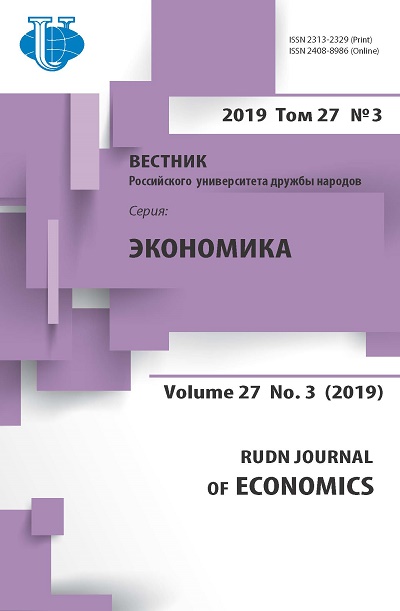The impact of cultivated land loss on China’s food security in the process of urbanization
- Authors: Cheng Y.1
-
Affiliations:
- Inner Mongolia Agriculture University
- Issue: Vol 27, No 3 (2019)
- Pages: 514-524
- Section: Developed and developing countries economy
- URL: https://journals.rudn.ru/economics/article/view/23115
- DOI: https://doi.org/10.22363/2313-2329-2019-27-3-514-524
Cite item
Full Text
Abstract
This article examines the four stages of urbanization in China since the first days of the founding and discusses in detail about the relationship between changes in urbanization, the area of cultivated land and the production of grain products. The aim of this study is to clarify the impact of urbanization on cultivated land and grain production, as well as the problems caused by the fall in the amount of cultivated land. China is the country with the largest population, and whether China's food security can be guaranteed depends not only on China itself, but also on the world. Research method - data analysis, comparison. The scientific basis is the data of the National Bureau of statistics and the Land Bulletin of China.
Keywords
About the authors
Yining Cheng
Inner Mongolia Agriculture University
Author for correspondence.
Email: uualisa@163.com
lecturer at Department of Finance, College of Economic and Management
306 Zhaowuda St., Saihan District, Hohhot, Inner Mongolia, People's Republic of ChinaReferences
- Dong Yanli. (2017). Study on the Problem of Agricultural Land, Non-Agriculturalization and System Innovation in the Process of Urbanization. Modern Business Trade Industry, (31), 19–20.
- Du Yuneng. (2013). National Food Security in the Process of Industrialization and Urbanization of Agriculture. University of Science and Technology of China, 2013.
- Gusakov N.P., Andronova I.V., Pinchuk V.N., Belova I.N., Bokacheva E.S., Kolotyrina E.A., Reshetnikova M.S., Belov F.D. (2019). Stranovyye osobennosti formirovaniya natsio- nal'nykh innovatsionnykh sistem (NNG) v usloviyakh rastushchey neopredelennosti mirovoy ekonomiki (na primere Kitay, Respubliki Koreya, YUAR, Rossii) [Country features of the formation of national innovation systems (NIS) in the face of growing uncertainty of the world economy (on example of China, the Republic of Korea, South Africa, Russia)]. Moscow. (In Russ.)
- Gusakov N.P., Shkvarya L.V. (2011). Vliyaniye mirovoy ekonomiki na razvitiye mezhstranovykh torgovo-ekonomicheskikh del v usloviyakh globalizatsii [The world economy influences on development of cross-countries trade-economic affairs in the context of globalization]. Scientific Review. Economics and Law, (1), 3–17. (In Russ.)
- Jin Sensen. (2014). Research on food security issues in the process of urbanization. A Dissertation Submitted for the Degree of Master.
- Brown L.R. (1994). Who will feed China. New York: W.W. Norton & Company.
- Mikhailushkin P.V., Gusakov N.P., Volgina N.A., Belova I.N., Lukyanets A.S. (2017). Orga- nizatsiya vneshneekonomicheskoy deyatel'nosti predpriyatiya [Organization of foreign economic activity of the enterprise]. International Journal of Applied Business and Economic Research, 15(11), 185–195. (In Russ.)
- Nie Ying. (2015). Analysis on the contribution of arable land for food safety in China. Eco- nomist, (1), 83–93.
- Northam R.M. (1975). Urban Geography. New York: John Wiley & Sons.















